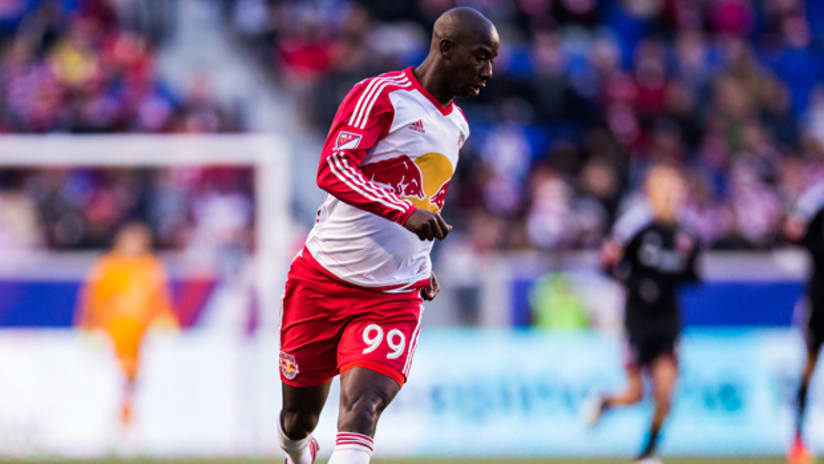FC Dallas have made a blistering start to the new MLS season, going into the RBNY game as joint-leaders of the Western Conference, despite having played a game less than Vancouver Whitecaps.
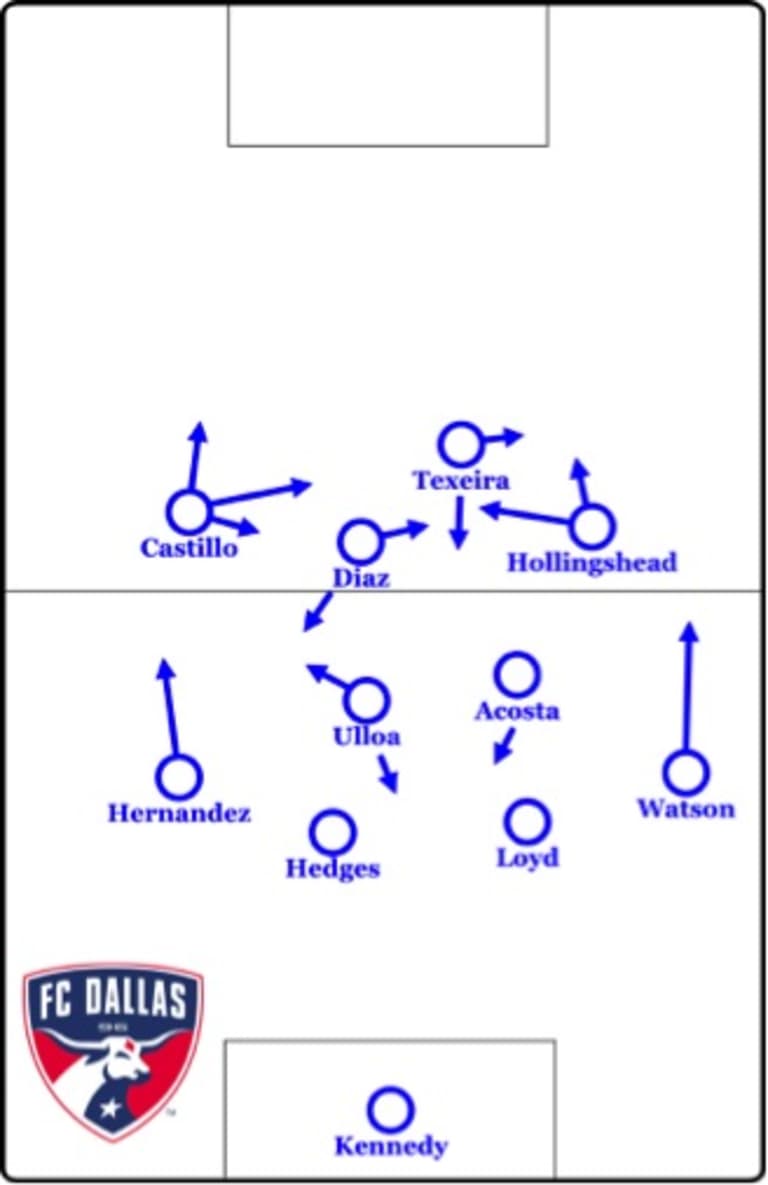
America’s Top Scorers
Coming in on the back of a 4-1 drubbing of Owen Coyle’s Houston Dynamo alongside an impressive defeat of the LA Galaxy, Oscar Pareja’s side have shown that they have quality on the attack. They lead both the Eastern and the Western conference in terms of goals scored, with their count of 17 leading the way by 2. Central to their scoring ability has been Blas Pérez, who has scored 5 goals this season – 29% of the team’s overall count.
However, they do have a tendency to leave the defence open. The most telling result for this was their 4-0 loss to the Rapids earlier on in the season; although the absence of centre-back Matt Hedges in that game must be noted. This result was somewhat of a shock overall as this year Colorado have still only made 9 goals to their name.
Central Combinations
With the movements inside from both Hollingshead and Castillo, a key feature of Dallas’ attacking organisation is their central combinations. All four forwards are strong technically and they circulate the ball quickly between themselves with multiple short passes, aiming to destabilise the opposition defence.
Combination play can provide numerous attacking benefits to the opposition, as it improves their retention of the ball in tight spaces whilst also serving to help improve the ability to penetrate the block by opening up spaces in destabilising the organisation.
Defensively Organised
When out of possession, Dallas run with a 4-4-2-0 defensive shape, with all 11 men behind the ball. The shape is very compact vertically with minimal space between the lines of defence, midfield and attack – with both Texeira and Diaz acting in midfield.

Such a shape is reminiscent of other European teams, namely Atletico Madrid and Borussia Moenchengladbach, who have both used a 4-4-2-0 shape in defence to great success. With this, Simeone won the Spanish Primera Division last year against financial giants Barcelona and Real Madrid, whilst the shape has given Gladbach much success this year, particularly when they beat Bayern Munich 2-0.
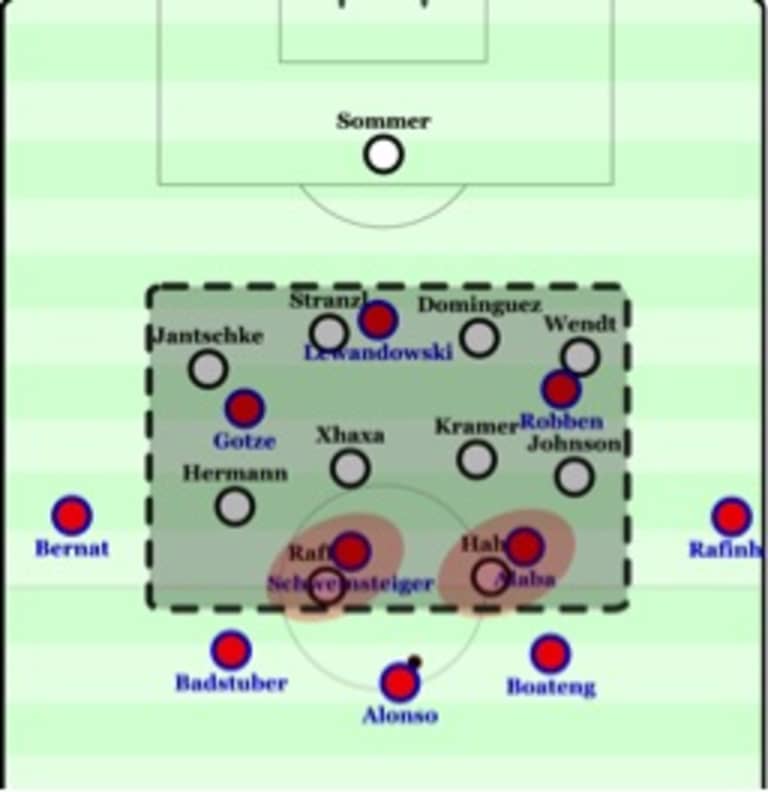
As you can see above both Raffael and Hahn, the two Gladbach forwards, are on the same vertical as Bayern midfielders Schweinsteiger and Alaba whilst no-one is on the same line as the situational back 3. Through doing this, Gladbach controlled the midfield through a clear overload of 6-4.
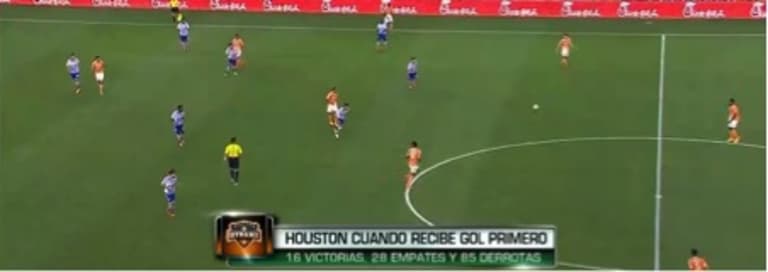
In the Dallas defensive block, they look to main a high level of compactness – particularly vertically. With minimal space between the lines of defence, midfield and attack, they can restrict the opposition’s ability to play through the block and instead force them wide.
Central Control
By utilising such a formation, a team can exert a strong level of control over the centre of the pitch. This is almost undoubtedly the most important area of the field as it provides the greatest strategic advantage to control it both in and out of possession.
The central third (or fifth if you include the half-spaces) of the pitch possesses the optimal position from which to access the rest of the pitch, as the ball can be in near-equal distances to all other spaces. In contrast, for example, if the ball is positioned on the right-wing, then it is very difficult for the attacking team to effectively and efficiently relocate it to the left-wing. On the other hand, if the ball is central then it can be more easily moved to either wing, as well as a number of alternative spaces.
As a result of this, the centre offers the optimal number of strategic opportunities for attacking, meaning that the defence will find it more difficult to predict and anticipate the approach they will take. When attacking down the wings, the attacking team don’t have many possibilities – the obvious one being a cross whereas centrally, a multitude of avenues open for methods of attack, such as a through ball, central combination or a diagonal into a half-space. Through controlling the centre in defence with their 4-4-2-0, they can restrict the attacking potential of the opposition, meaning that they can then predict the method of attack more easily.
On the Break
A key feature which Dallas displayed against the Houston Dynamos was their ability on the break. When the opposition had the ball in midfield during a transitional phase, there were a few situations where Dallas left 3 or 4 of their attackers ahead of the ball – making for a very dangerous counter-attack. This feature resulted in the opening goal of the game – where a central combination with all 4 forwards in close proximity of the ball resulted in Hollingshead breaking through to make a composed finish.
The Winners of the Hudson River Derby
Jesse Marsch’s team put in a strong performance in their first ever Hudson River derby, as they put NYCFC to bed with a 2-1 victory and controlled the game throughout despite having one less player.
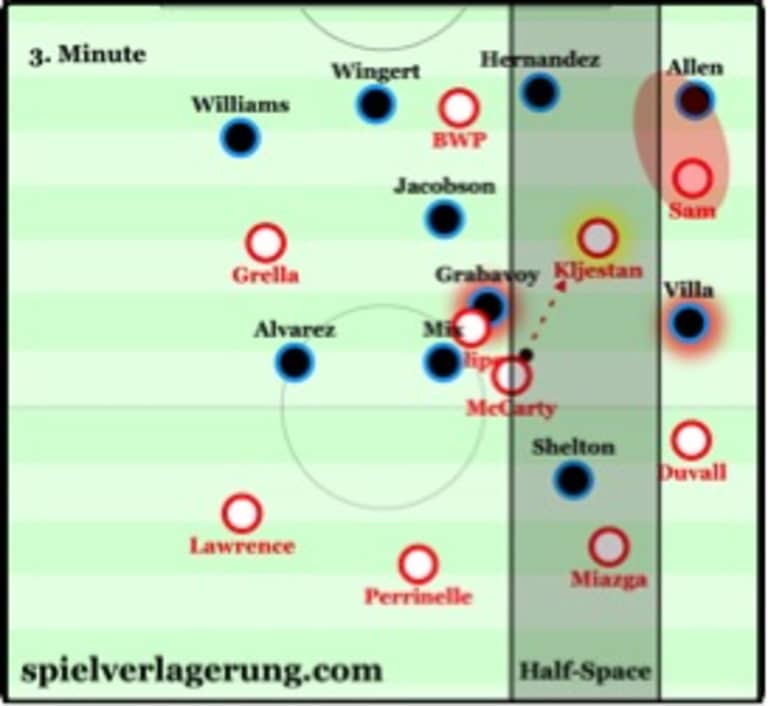
In the game, they often took advantage of the opposition’s lack of defensive organisation and co-ordination (something highlighted in my previous tactical preview) and no better example of this was in the first goal. McCarty was given the time to play a simple pass into the unmarked Kljestan in the right half-space, from here he could play the ball onto Lloyd Sam who created a 1v1 situation due to the passivity of David Villa. This gave him the opportunity to put in a precise lobbed cross, giving an (also) unmarked BWP one of the easiest goals he’ll score this campaign just 3 minutes in.
Looking Forward to the Toyota Stadium
However, when it comes to the Dallas game tonight, the Red Bulls will have no such luxury as the opposition are much better defensively organised.
A key question come tonight will be how the Red Bulls plan on breaking down Dallas 4-4-2-0 which has seen them concede just. Such a defensive organisation is particularly effective against the fast-paced transitional attacking which is becoming a feature of Marsch’s side therefore the Red Bulls may have to look towards alternative methods to breaking the opposition block down.
The roles of McCarty and Felipe could be pivotal, as their support in the circulation of the ball will be needed as it is unlikely that the Dallas side will give RBNY much freedom on the break.
Another feature will be how the Red Bulls will look to nullify a team which has scored the most goals in MLS so far this year. The creative influence of Diaz will need to be curtailed whilst the attacking force of players such as Perez, who is level with BWP for 5 goals this season, must be dealt with effectively.
What I can be surer of however, is the excitement involved in a clash between two of the high-scoring teams of MLS so far this year. Both sides possess excellent attacking abilities and with players such as BWP, Diaz, Sam and Castillo it is looking unlikely that tonight’s match will be void of goals.
Tom Payne is an analyst and writer for Spielverlagerung(@spielvercom) - a football tactics website focusing on match and team analysis. You can follow him on Twitter at @tompayneftbl.

